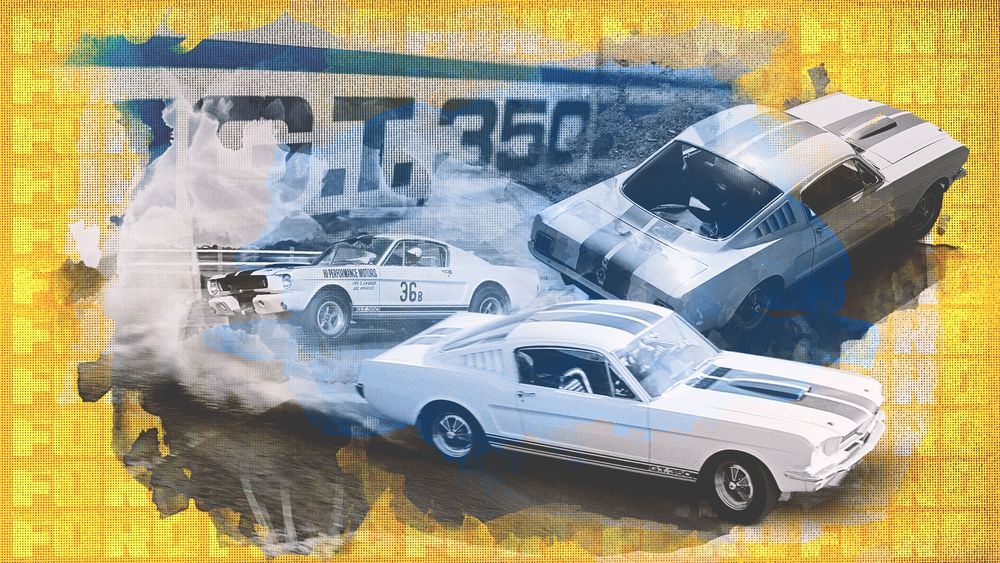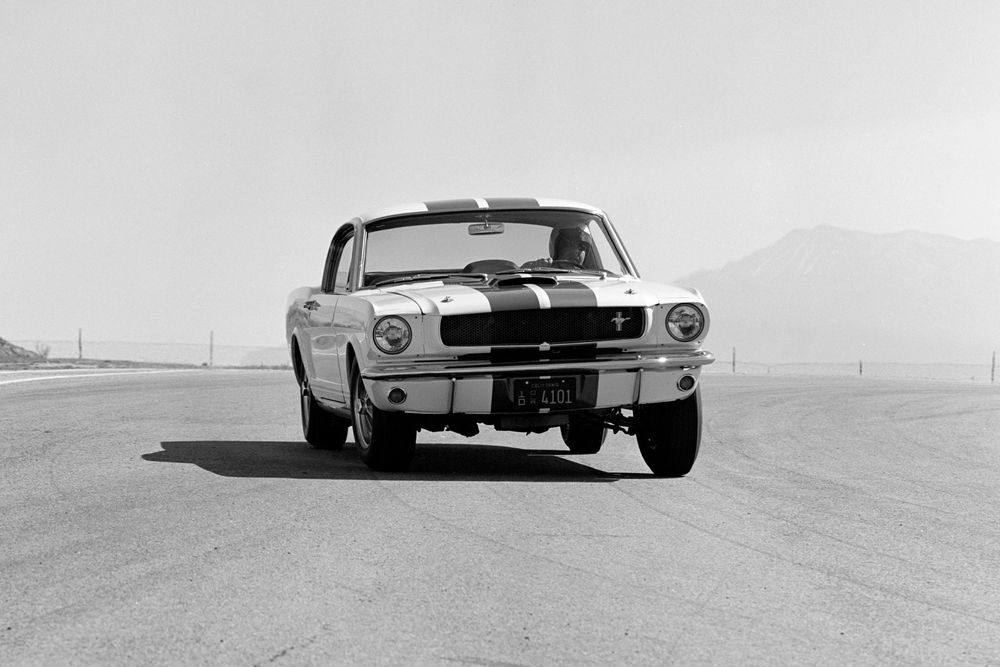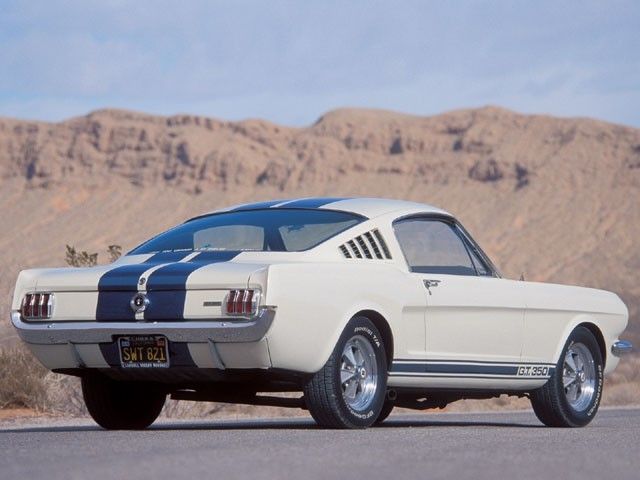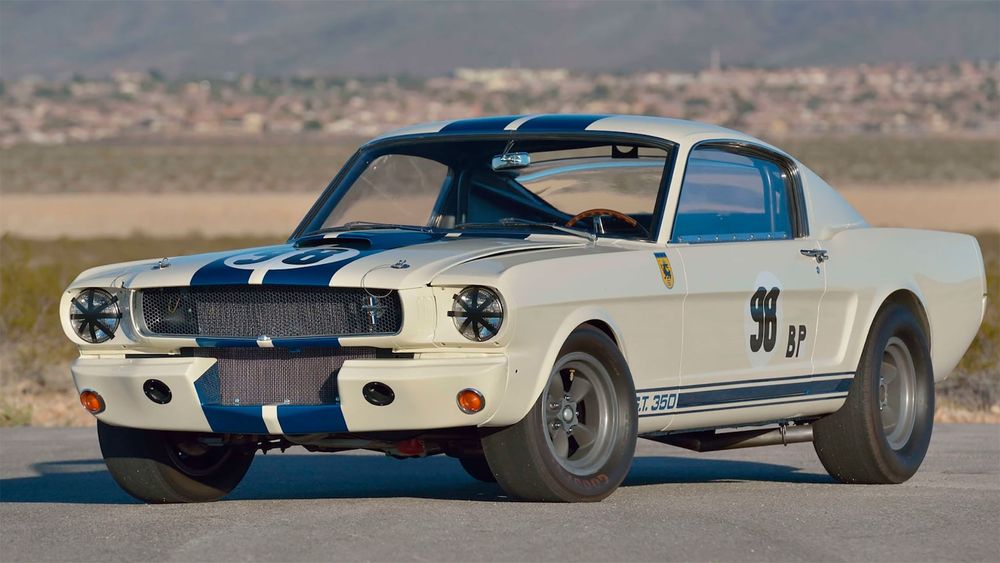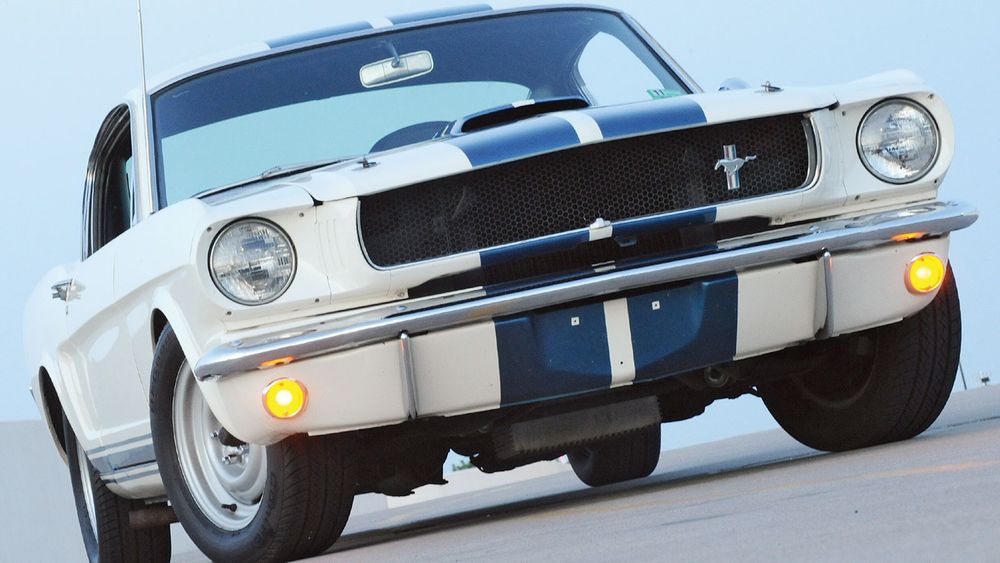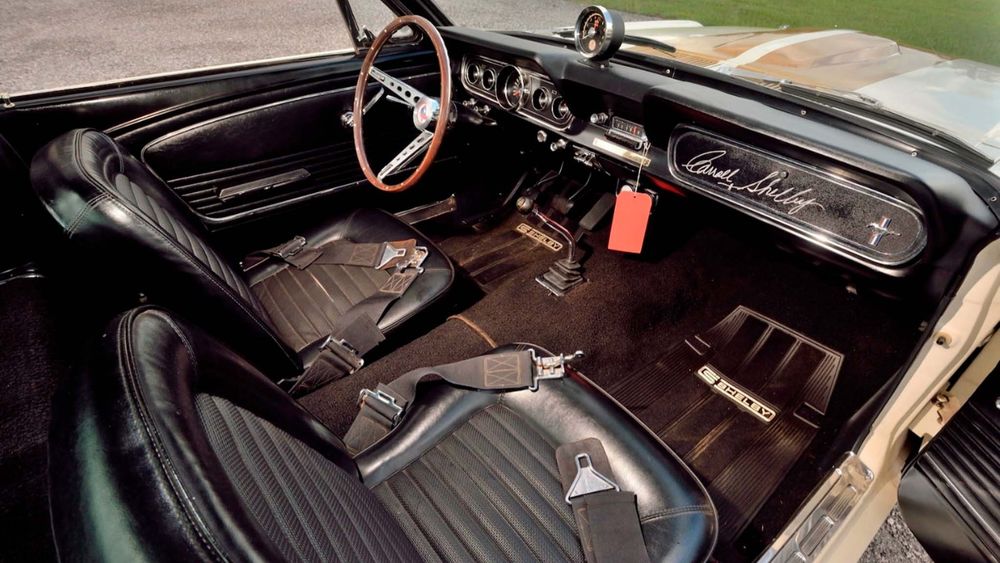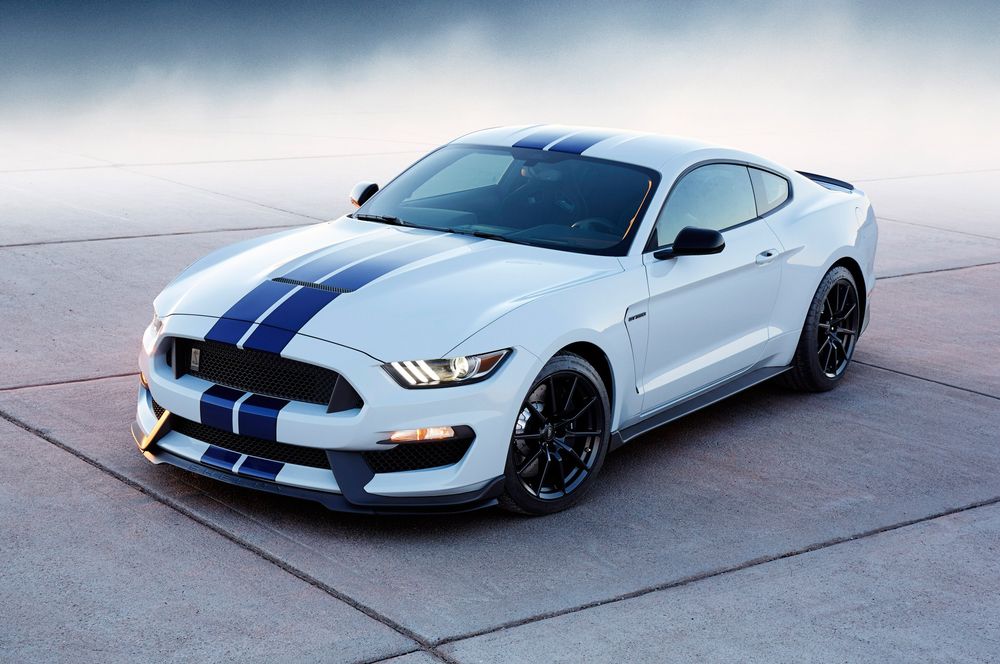How the Original Shelby GT350 and GT350R Transformed the Mustang into a Track Icon
When Ford needed the Mustang to earn respect on the track, Carroll Shelby stepped in—reluctantly—and created a racing icon.
It’s hard to overstate the sales juggernaut that Ford had on its hands with the original Mustang. After debuting in April of 1964, the new pony car promptly shattered all of automaker’s most optimistic sales estimates, and Ford moved more than a quarter-million Mustangs before the end of that year. The company’s new Falcon-based 2+2 was a success well beyond anything that Lee Iacocca—Ford’s division manager at the time—could have ever imagined.
0:00 / 0:00
But in the wake of the muscle car frenzy that Pontiac had helped to ignite with the new GTO, Iacocca saw trouble ahead for Ford’s new pony: The Mustang was quickly earning a reputation as an image car as opposed to a serious performer. To remedy the situation, Ford turned to Carroll Shelby, the racing luminary behind the Blue Oval’s recent string of motorsport successes with the AC Cobra and its closed-top counterpart, the Daytona Coupe.
Shelby—a man who’d made a name for himself racing and developing purpose-built sportscars—initially scoffed at the idea of trying to turn the comparatively massive, sedan-based Mustang into a road course performer. But Iacocca wasn’t having it. "In 1964, when Lee Iacocca said, 'Shelby, I want you to make a sports car out of the Mustang,' the first thing I said was, 'Lee, you can't make a racehorse out of a mule. I don't want to do it,' Shelby explained while reflecting on the project during an interview. “He said, 'I didn't ask you to make it; you work for me.’”
Despite his apprehension, Shelby soon set to work turning Ford’s new coupe into a formidable machine on and off the track. The result was the road-going 1965 Ford Mustang Shelby GT350 and the race-prepped GT350R, the latter of which went on to dominate the SCCA’s popular B-Production road racing class as well as the early years of the Trans Am series that took shape a few years down the road.
Creating a Road Racing Icon
Although the 1965 Mustang Shelby GT350 differed substantially from the GT350R race car, much of the former’s development was dictated by the B-Production race class rule set. Those rules stipulated that manufacturers would have to sell at least a hundred examples of a given car to homologate it for racing use, and Shelby knew that trying to sell unadulterated race cars in that quantity would be difficult.
SCCA rules also mandated that a race car’s road-going counterpart needed to retain either the race car’s engine configuration or its suspension setup, so Shelby chose the latter for the GT350.
Over subsequent years, the GT350 would evolve into a more civilized performance machine with the addition of creature comforts and an optional convertible body style, but it retained its reputation for thrilling performance throughout.
The GT350 bowed out of Ford’s lineup after 1970, but the automaker revived badge in 2016 for the S550-based Mustang with the Shelby GT350 and GT350R road cars, which benefited from a similarly track-focused performance treatment.
Design and Features
The initial batch of Shelby GT350 prototypes were completed by Shelby’s team at Ford's San Jose assembly plant, but subsequent examples were produced in semi-finished form by Ford and then shipped to Shelby’s manufacturing facility for completion. For 1965, all GT350s were Wimbledon White fastbacks with Guardsman Blue rocker stripes. Roughly a quarter of the 562 cars produced for that model year were delivered with optional Le Mans stripes that ran the length of the vehicle from nose to tail. A fiberglass hood with a functional scoop, unique wheels and side-exit exhaust pipes completed the look.
All 1965 GT350 Mustangs were outfitted with black interiors. To qualify as a sports car under race class regulations, the Mustang’s rear seat was removed, and a fiberglass shelf was installed in its place to serve as a mounting point for a full-sized spare tire.
Performance Specifications
All 1965 Shelby GT350 models started life as garden-variety fastbacks equipped with Ford’s 271-horsepower, 289 cubic-inch V-8 and a four-speed manual transmission. To enhance the Mustang’s acceleration, Shelby’s team outfitted the small-block with a high-rise intake manifold, a larger 725cfm carburetor, and low-restriction exhaust system—modifications that resulted in official output numbers of 306 horsepower and 329 pound-feet of torque.
In a 2,800-pound car, that proved to be plenty of grunt for the day: The sprint to 60 miles per hour from rest took about seven seconds in MotorTrend testing on the way to a top speed of roughly 140 mph, both of which were impressive figures for the time. But straight-line pull wasn’t the GT350’s claim to fame.
In compliance with SCCA rules, the GT350 was outfitted with a suspension setup nearly identical to the GT350R race car. Compared to the standard Mustang, this included relocating the front A-arms, and adding Shelby-spec springs and Koni shocks, a quick-ratio steering box, and override traction bars.
Over subsequent years, the GT350 traded outright track capability for the sake of on-road civility and greater consumer appeal. An automatic transmission became optionally available for 1966 alongside a growing roster of available paint options and creature comforts, while performance-minded modifications like the traction bars and the ’65’s trunk-mounted battery fell by the wayside. This trend would continue as the Mustang evolved into a larger and more feature-rich performance vehicle in general. Toward the end of the 1960s, Ford itself had taken over most of the design and styling decisions for the GT350, and Shelby broke ties with Ford in the summer of 1969.
Racing Success
The Shelby GT350R was a contender in SCCA road racing out of the gate, and racers went on to win several regional SCCA championships as well as the national B-Production title piloting GT350Rs in the 1965, 1966, and 1967 race seasons.
It was a similar story in the early days of the Trans Am series as well: Ford’s factory-backed effort saw racers piloting GT350Rs take the series title in 1967 and again 1968.
The Rent-A-Racer
In 1966, an unlikely partnership between Shelby American and the Hertz Corporation was established to supply Shelby rental cars to the public.
Just over a thousand 1966 Shelby GT350-H Mustangs were added to Hertz's rental car fleet under what would be called the "Rent-A-Racer" program. The GT350-H was more or less mechanically identical to the standard 1966 Shelby GT350, but the black-and-gold livery that the majority of GT350-H Mustangs wore helped them stand out from the pack. A limited number were also available in Candy Apple Red, Sapphire Blue, Ivy Green, and the Wimbledon White and gold scheme seen here.
Unsurprisingly, Hertz eventually put the kibosh on the Rent-A-Racer program due to sky-high repair costs. But for a brief moment in time, the general public could rent one of the hottest performance cars around for 17 bucks a day.
A Sought-After Collectible
Shelby produced just over 7,000 Shelby GT350 and GT350Rs during their five-year production run. Today, well preserved, all-original 1965 GT350s—the rarest road car of the bunch—can fetch half a million dollars at auction. Less than 40 of the GT350R race cars were produced for that model year. As a result, original examples are some of the most valuable Mustangs in existence.
Road-going 1966–1969 GT350s are a more reasonable proposition for prospective buyers, but you can expect the price to venture well into six-figure territory for a showroom condition example.
Ford Mustang Shelby GT350 and GT350R Fast Facts
- While the Mustang was an instance success when it debuted in April of 1964, Lee Iacocca—Ford’s division manager at the time—was concerned that it would soon be overshadowed by competitors’ upcoming high-performance offerings
- Ford turned to Carroll Shelby, the architect behind the Blue Oval’s recent string of motorsport successes, to remedy the situation
- Despite initial concerns, Shelby soon set to work turning the Mustang into a formidable performance machine on and off the track
- Although the ’65 Mustang Shelby GT350 differed substantially from the GT350R race car, much of the former’s development was dictated by the SCCA’s B-Production road racing class rule set
- 1965 Shelby GT350 models started life as garden-variety fastbacks with a 271-horsepower, 289ci V-8 and a four-speed manual transmission. To enhance the Mustang’s acceleration, Shelby’s team outfitted the small-block with a high-rise intake manifold, a larger 725cfm carburetor, and low-restriction exhaust system, modifications that resulted in official output numbers of 306 horsepower and 329 pound-feet of torque
- In compliance with SCCA rules, the GT350 was outfitted with a suspension setup that was nearly identical to the GT350R race car. Compared to the standard Mustang, this included relocated front A-arms, Shelby-spec springs and Koni shocks, a quick-ratio steering box, and override traction bars
- The Shelby GT350R was an instant contender in SCCA road racing, and competitors went on to win several regional SCCA championships as well as the national B-Production title piloting Shelby’s latest creation in the 1965, 1966, and 1967 race seasons
- Over subsequent years, the GT350 traded outright track capability for the sake of on-road civility and greater consumer appeal
- In 1966, an unlikely partnership between Shelby American and the Hertz Corporation was established to supply Shelby rental cars to the public. Just over a thousand 1966 Shelby GT350-H Mustangs were added to Hertz's rental car fleet under what would be called the "Rent-A-Racer" program
- Toward the end of the 1960s, Ford itself had taken over most of the design and styling decisions for the GT350, and Shelby broke ties with Ford in the summer of 1969
- Although the GT350 would bow out after 1970, Ford revived badge in 2016 for the S550-based Mustang with the Shelby GT350 and GT350R road cars, which benefitted from a similarly handling-focused performance treatment
